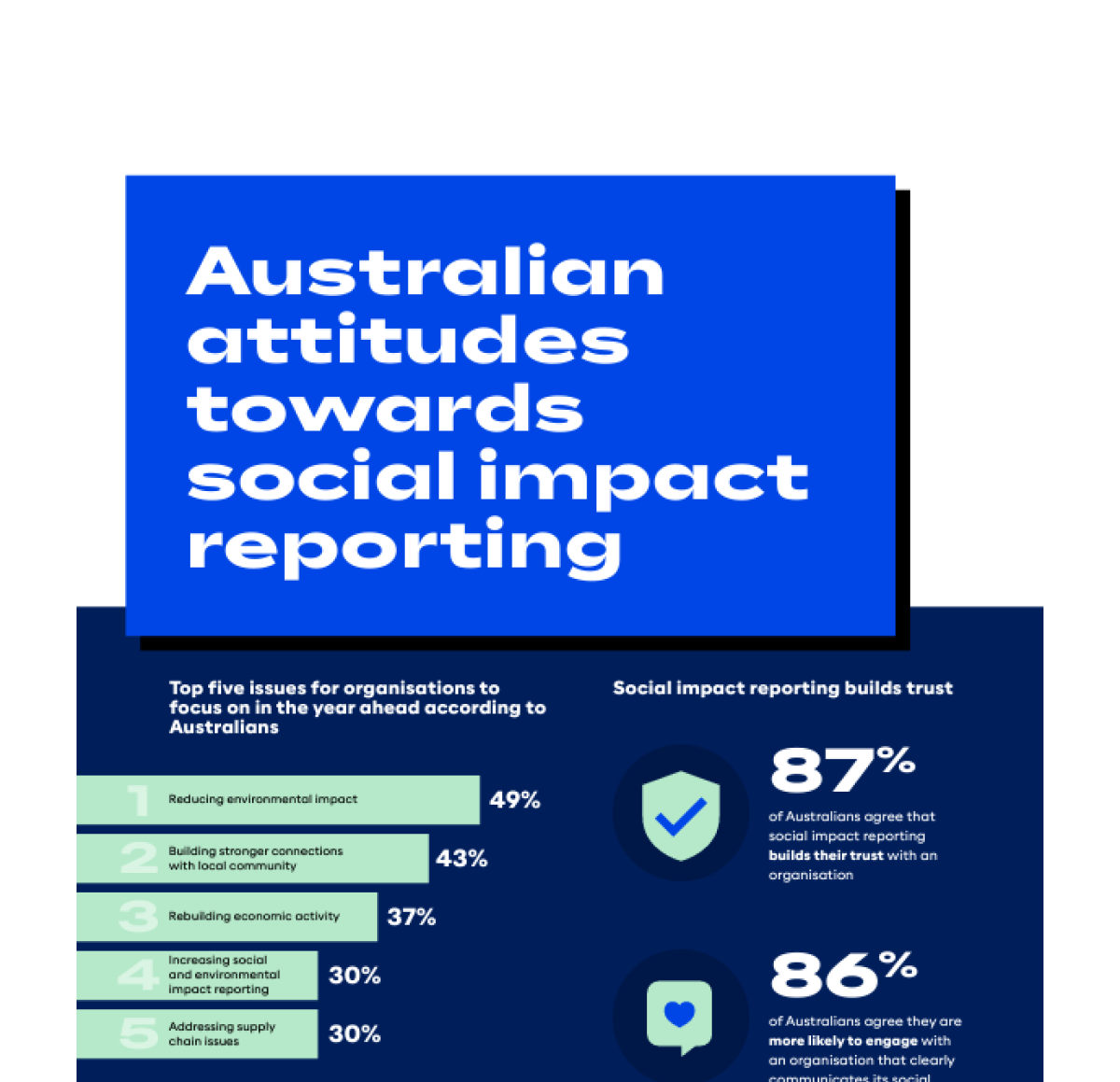ARTICLE
Top tips to communicate your social impact

With Australians looking for organisations to increase their social and environmental impact reporting , it is helpful to understand what insights and measures Australians are looking for.
While there is a strong desire for social impact reporting, the challenge for organisations is that many Australians are not sure what should be measured and reported on. When Australians were presented with an opportunity to contribute their own ideas to what organisations should report on to demonstrate their social impact, one in three Australians (30%) said they aren’t sure. Those that do have a clear idea of their preferences are most likely to want organisations to report on specific ways in which they have impacted communities and stakeholders, with clear metrics to demonstrate change over time (14%).
Australians are looking for organisations to report on their environmental impact.
When presented with a list, the areas Australians believe it is most important for organisations to report on are environmental impact (67% extremely/very important), staff morale and wellbeing (65%) and social impact (62%). This is above finances (59%) and progress towards the vision (59%).
While still more than half, Australians are less likely to believe it is extremely or very important for organisations to report on organisational innovations and improvements (57%), governance (57%) and senior leadership (52%).
As social impact reporting is a relatively new sphere, its measures are often bespoke to the organisation’s vision and mission. On a broad scale, however, Australians are looking for reporting to give insight into how an organisation’s actions are impacting the lives of individuals, communities, and the environment.
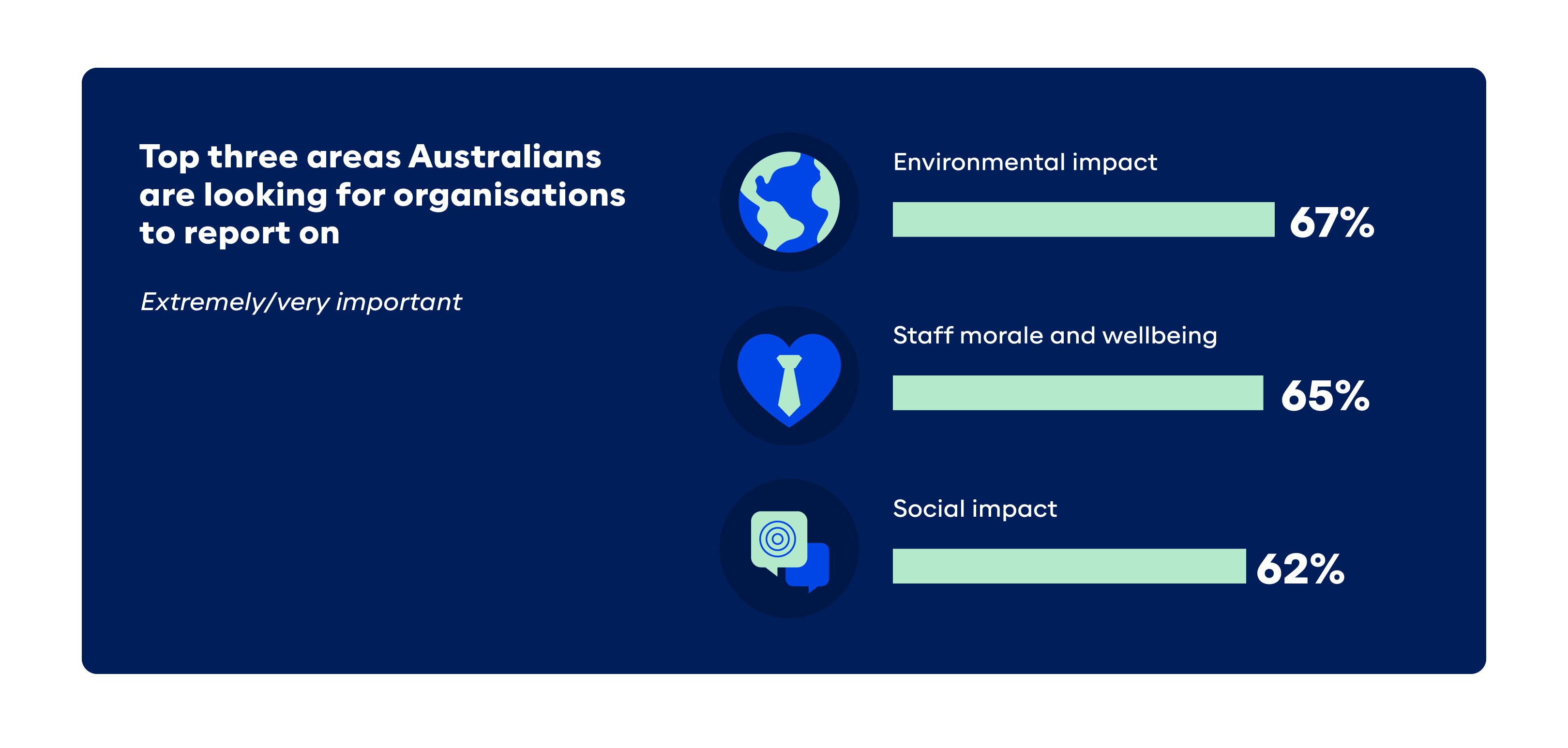
Reporting on governance and finances is more important to older Australians
Baby Boomers are the only generation to include finances and governance in their top three inclusions for social impact reporting. Unsurprisingly, younger Australians are more likely than older Australians to see it as extremely or very important for an organisation to report on its social impact (69% Gen Y cf. 65% Gen Z, 67% Gen X, 49% Baby Boomers).
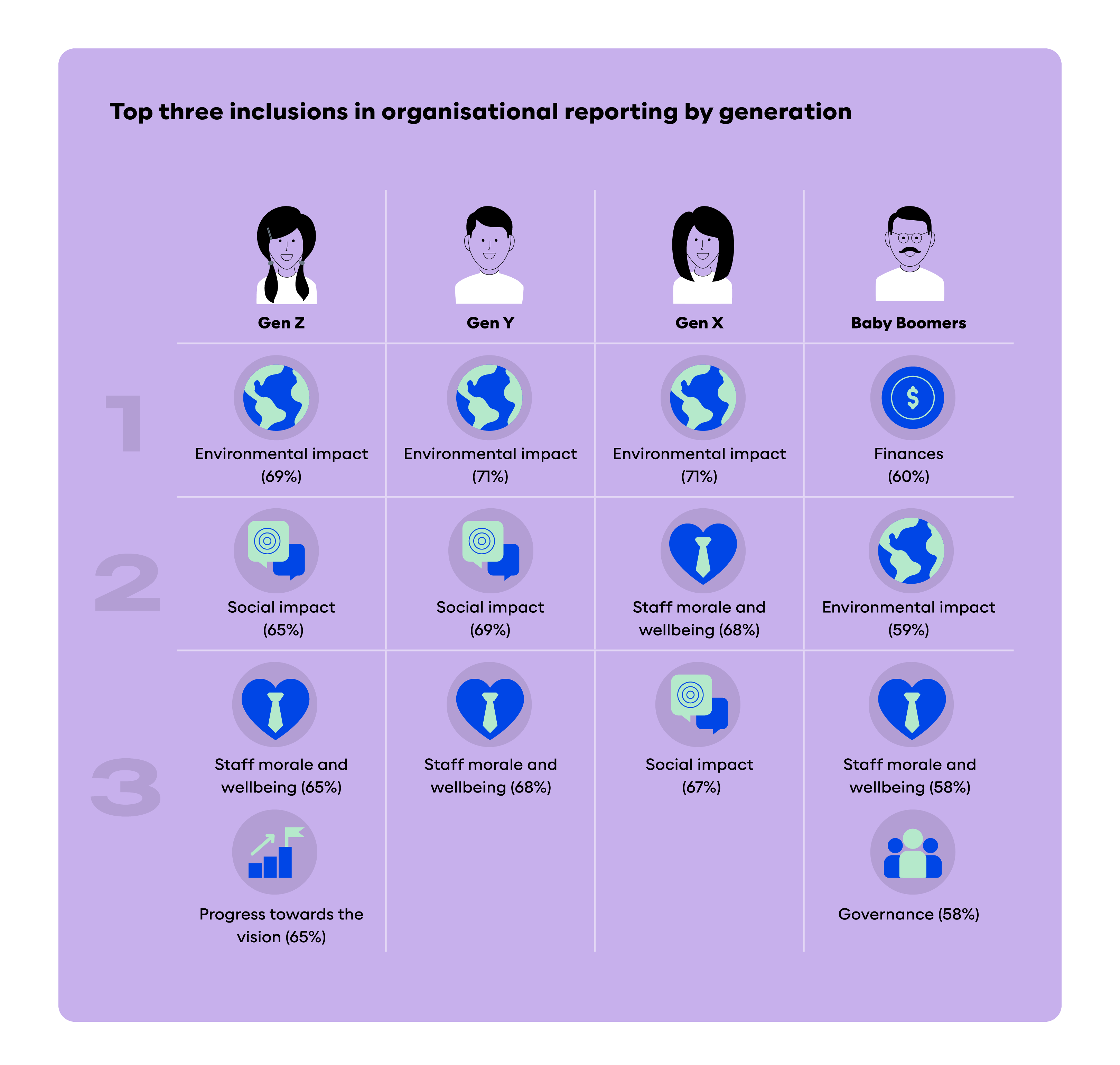
When thinking about whether financial reporting or social impact reporting matters more to them, Australians are evenly split with 49% saying financial reporting matters more and 51% saying social impact reporting matters more. In reality, it is the combination of both financial and social reporting that tells the story of an organisation’s impact. In a business and organisational culture where annual financial reporting is essential and, in many cases, mandatory, it is remarkable that half of Australians say that social impact reporting matters more. We anticipate that within a decade, just like financial reporting, social impact reporting will be viewed as essential, if not mandatory.
Digital engagement opportunities
When it comes to social impact reporting, it is not just what is reported, but how it is reported that matters. In a time when it has never been easier to access information, the challenge for organisations is to simplify and communicate their message in a way that drives engagement.
Video summaries are most engaging
Australians see the most engaging forms of social impact reporting as short video summaries (47%), followed by infographics (43%) and interactive web reports (39%). These formats are preferred over articles (36%), written reports (31%) and podcasts (28%).
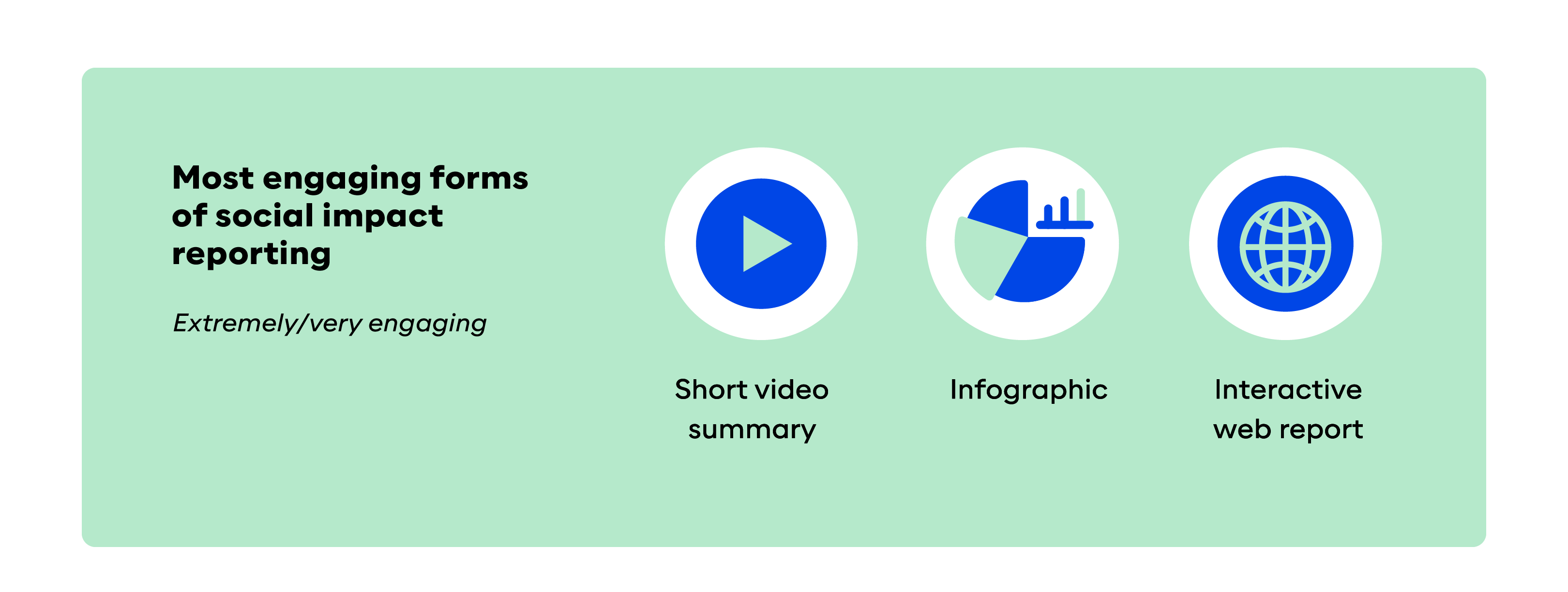
Embrace social media as an engagement platform
The most engaging platforms for hearing about an organisation’s social impact are social media (45%), websites (44%) and email (41%). A third of Australians consider direct mail (33%) or text messages (33%) as extremely or very engaging. The least engaging platform for hearing about an organisation’s social impact is a blog (25%).
In line with their digitally and socially integrated lifestyle, younger Australians are more likely to find hearing about an organisation’s impact on social media (63% Gen Z cf. 58% Gen Y, 49% Gen X, 21% Baby Boomers) or through text message (43% Gen Z cf. 36% Gen Y, 34% Gen X, 23% Baby Boomers) extremely or very engaging. Baby Boomers, however, are the only generation to have direct mail in their top three most engaging platforms to hear about an organisation’s social impact.
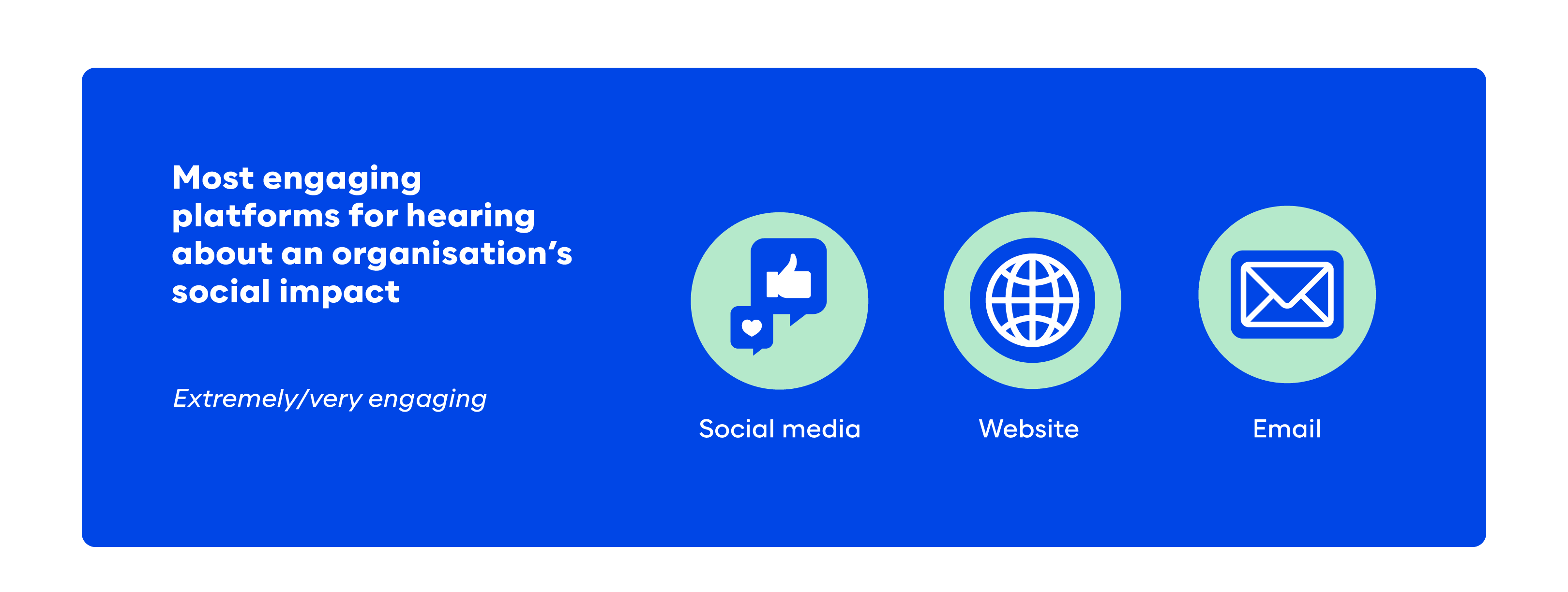
Bite-sized, regular updates are best for sharing about organisational impacts
Rather than the traditional annual multipage report, Australians are looking for bite-sized, regular updates about an organisation’s impacts.
Two in five Australians (41%) want to hear about the impacts of the organisations they are engaged with at least monthly. While just over three in ten (31%) want to hear about an organisation’s impact quarterly. Australians are most likely to want to spend between two and five minutes engaging with an organisation’s content to understand its social impact (39%). A third (33%) are willing to invest 16-30 minutes of their time to understand an organisation’s impact.
Stepping into a new type of reporting can be challenging and there can be uncertainty around not getting it right. The best first step, however, is to start and refine it along the way. Unlike financial reporting with hundreds of years of history and established reporting metrics, social impact reporting is new and open to developing best practice. Who knows as your organisation steps into it, experiments and refines along the journey.
To learn more about how you can communicate your social impact download the free report. If you’re ready to start communicating your social impact get in touch today.

